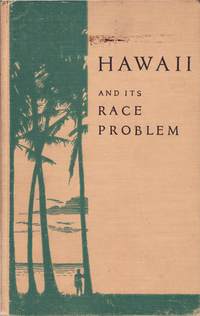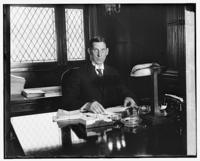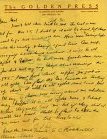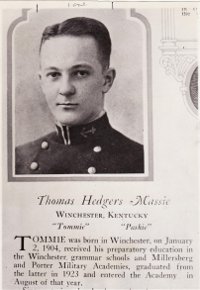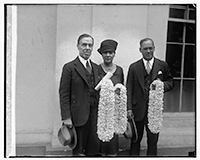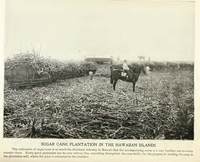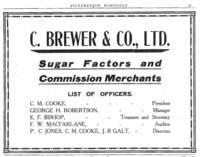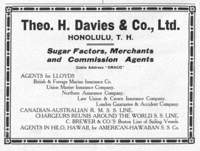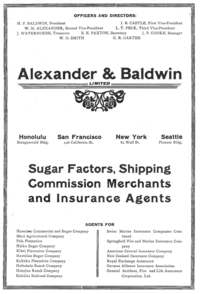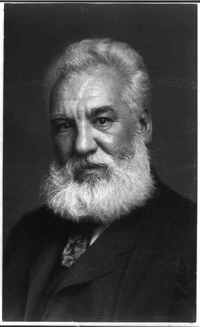The Massie Trial
"Upon Darrow's death in 1938, his friends gathered to honor the man who had tirelessly advanced so many progressive causes. They wrote essays and poems to praise his legacy of support for blacks, the poor, the underprivileged, the oppressed. His major trials were discussed and celebrated—except one. No mention at all was made of the world-renowned case he had tried in Honolulu only six years earlier. And since then, unlike Darrow's many great contributions to American legal lore, it has faded into obscurity. Because in this one, win or lose, he was on the wrong side."
– David E. Stannard, Honor Killing, 5 (2005)."[B]lasted careers, ruined lives, tragedy, and death."
– Lawrence Judd, then Governor of Hawaii recounting the Massie case in Lawrence M. Judd & Hawaii, 166 (1971)."The old man came down to the Islands believing his personal presence and his known tolerance and understanding of human suffering would help smooth over any racial problems that might exist. When he left the Islands two months later the racial issues were more deeply graven than ever."
– Theon Wright, Rape in Paradise, 305 (1966).
|
Trial of five youths who were indicted for allegedly kidnapping and raping Thalia Massie, the wife of Navy Lieutenant Thomas Massie. It is also known as the Ala Moana trial. Trial transcripts for November 18, 19, 20, 23, 25, 27, 30 and December 2, 1931.
Motion to Quash Indictment of the Fortescue and Massie Defendants and Motion for Continuance (1932).
The motion for continuance of the trial was to give Clarence Darrow enough time to prepare. An affidavit in support of the motion informs the court that Clarence Darrow has been retained.
Affidavits Alleging Bias or Prejudice (1932).
Affidavits by the defendants Grace Fortescue, Thomas Massie, Edward Lord, and Albert Jones alleging that Judge Cristy has a personal bias or prejudice against them.
Judge Albert Cristy and the Grand Jury (1932).
Various documents related to Judge Cristy's conduct in pressuring the grand jury to indict the defendants for the murder of Joseph Kahahawai.
Territory of Hawaii v. Grace Fortescue, et al., Crim. No. 11891 (1932).
Partial set of transcripts for the trial Territory of Hawaii v. Grace Fortescue, et al., Crim. No. 11891 which began on April 4, 1932. Covers April 14 to April 25, 1932. Grace Fortescue, Tommy Massie, Albert Jones, and Edward Lord were charged with kidnapping and murdering Joseph Kahahawai on January 8, 1932.
Miscellaneous Documents from the Massie-Fortescue Trial.
Variety of trial documents and defense documents.
Motion for Nolle Prosequi (1933).
Prosecutor John Kelley's motion for nolle prosequi in regard to the Ala Moana rape defendants.
Excerpt from Corpus Juris which cites and summarizes various reported decisions involving successful or unsuccessful defenses to homicide including the unwritten law.
State v. Young, 314 Mo. 612 (1926).
Young attempted to use the "unwritten law" defense in his trial for killing a man who the defendant believed ruined his 16 year old daughter by getting her pregnant.
State v. Bailey, 103 W. Va. 605 (1927).
In a case involving murder and the "unwritten law," the Supreme Court of Appeals of West Virginia stated: "Frequently juries will not convict the husband or father who has killed the ravisher or seducer. They invoke the "unwritten law," and pay no attention to the instructions given by the court. And it is within the province of the jury to say that the homicide was due to passion aroused by a provocation which blinded reason."
Wehenkel v. State, 116 Neb. 493, 218 N.W. 137 (Neb. 1928).
The court stated that: "The so-called 'unwritten law,' by which is meant the private right to avenge a criminal wrong done to a female member of one's family, or, if sought to be applied here, to avenge a wrong done a spouse in violation of the marital rights of the other spouse, does not exist at common law, nor does any statute of this state recognize it in any way whatever; it is not a defense available to one accused of homicide."
Posey v. State, 50 Okla.Crim. 129, 296 P. 527 (Okla.Crim.App. 1931).
The Criminal Court of Appeals of Oklahoma repudiated the unwritten law: "It is apparent from the record that defendant knew of illicit relations between his wife and the deceased and deliberately decided to take the law into his own hands and kill Frost. . . . The fact that deceased was guilty of an offense in his relations with the wife of defendant did not justify defendant in seeking out and killing deceased. "The right to avenge a wrong done a female member of one's family by killing the wrongdoer" does not exist in this state. It is not permitted one thus wronged to take the law into his own hand and wreak private vengeance on the wrongdoer."
Diagram Showing Interrelation of Business Interests in Hawaii (1932).
Diagram drawn for the Richardson Report that shows how Hawaii's businesses is controlled by relatively few companies and corporate executive members.
Territory v. Young, 32 Haw. 628 (1933).
Young was convicted of rape for an attack on March 12, 1932 and was sentenced to a maximum of thirty-five years imprisonment at hard labor. Judge Cristy was the trial judge. Prosecutor Kelley represented the government in this appeal. Young argued several errors on appeal including: "the court erred in refusing to grant a new trial on the ground of the general, widespread newspaper prejudice concerning the public rape hysteria that existed and was prevalent in Honolulu, T. H., at the time of said trial, which was short of lynch law; and which followed, and was concomitant to the notorious, world-wide so-called "Massie-Fortescue trial," wherein the territorial newspapers commented on the pretrial guilt of Joseph Young; wherein the misconduct of * * * the members of the Citizens League for Good Government was unfair, unconstitutional, prejudicial and criminal in publicly prosecuting and persecuting this indigent and helpless defendant; wherein the pretrial newspaper statement of chief of police, Mr. Weeber, was published, commenting that he was convinced of the guilt of the defendant and that what we need here is a "legal necktie party;" wherein the pretrial newspaper statement of prosecutor John C. Kelley was made, proclaiming that he was satisfied that Joseph Young was guilty of having raped Bernice Lum and that this time he would not accept a plea of guilty, but instead, he would insist on the maximum penalty, inferring and meaning thereby that he would demand the hanging of the defendant, Joseph Young.
Cline v. Commonwealth 248 Ky. 609 (1933).
In an appeal from a murder conviction and sentence of life in prison, the Court of Appeals of Kentucky strongly rebuked the "unwritten law" defense: "The evidence is overwhelming in this case that defendant maliciously shot and killed the deceased to avenge some imaginary but unstated wrong done by him to the former's wife, and the urged instruction on insanity was evidently sought for the purpose of exploiting before the jury defendant's alleged rights under the disapproved doctrine of the "unwritten law." Such conditions, if they exist, might be accepted by the jury in reducing the magnitude of the crime from murder to voluntary manslaughter, but human life is too sacred for the law to adopt the principle that the unwritten law shall excuse the offender from the consequences of his crime, and neither this nor any other court, so far as we are aware, has ever so declared.
Short reference to a Virginia statute enacted in 1908 to provide the prosecution with the ability to introduce evidence of the truth or falsity of an "unwritten law" defense.
Proposed Bill to Codify Unwritten Law in Oklahoma (1908).
Criticism of an Oklahoma bill that would provide a legal justification for murder in cases in which local sentiment under the unwritten law makes conviction impossible.
Hawaii's Rape Law before Massie trial (1925).
Section 4147 sets forth the punishment for a rape conviction which prior to the Ala Moana trial did not include capital punishment. Section 4156 requires corroboration of the female victim's testimony. Both these sections were amended in 1932 in response to the Ala Moana and Massie cases.
Manslaughter in Texas Penal Code.
Homicide under Texas law in 1925 could be reduced to manslaughter if the killing was done "under the influence of sudden passion." Examples given include the killing of a man who committed adultery with the husband's wife if the killing was done as soon as the adultery was discovered. Also, insulting words or conduct towards a female relation might be enough.
Act to Amend Laws Relating to Rape, Abduction and Seduction (1932).
In response to the alleged rape of Thalia Massie and the failure of a jury to convict the defendants in the Ala Moana trial, the Hawaii legislature amended the punishment for a rape conviction to include the "punishment of death." The amendment also removed the requirement that the female victim's testimony had to be corroborated by other evidence. These amendments were enacted 21 days after Joseph Kahahawai was murdered.
Congressional act that established the form of government for the Territory of Hawaii.
Organic Act of the Territory of Hawaii, ch. 339, 31 Stat. 141 (1900).
Congressional act that established a form of government for the Territory of Hawaii enacted on April 30, 1900. This version published in July 1911 was annotated by Walter Francis Frear who at various times served as an associate justice and chief justice of the Supreme Court of Hawaii and governor of Hawaii.
Investigation of Conditions In Honolulu (1932).
Debate from the Congressional Record about Senate Resolution 137 submitted by Senator McKellar begins on page 8 of the pdf document. The resolution requested an investigative committee be formed because of the Massie case.
Police interview of Ben Ahakuelo at the Honolulu Police Station (1932).
This interview took place 12 days after Joseph Kahahawai was murdered.
Proposed Investigation of the Government of the Territory of Hawaii (1932).
Hearing on Senate Joint Resolution 81 which created a joint congressional committee to "conduct a thorough investigation of the government of the Territory of Hawaii, the conditions as to law enforcement therein, and the relation between the government and the people thereof and the agencies of the United States Government within such Territory, with a view to determining whether changes in the status of such Territory, in its organic law, and in the administration of its civil affairs and criminal law are advisable.
H. R. 11. Resolution memorializing the President of the United States in the matter of lawlessness in the Hawaiian Islands (1932).
Petition and request from the Kentucky House of Representatives to President Hoover to use the power vested in him "to demand that the rapists who so dastardly, beat and raped the Wife of Lieutenant Massie, be brought to justice and to insist that a full measure of the law be meted out to them . . . ." The petition also asked that the defendants accused of killing Joe Kahahawai be immediately released and the President to declare martial law in Honolulu "until such time as the territory of "Hawaii can be made safe for women, and especially for the wives of our men in the Army and Navy. The House resolution was affirmed by the Senate.
Report of Governor's Advisory Committee on Crime (1931).
Governor Judd established an Advisory Committee on Crime to study delinquency, crime and punishment in Hawaii. The committee submitted this report to Governor Judd; the report was published in February 1931, about seven months before the alleged assault on Thalia Massie.
Labor Conditions in the Territory of Hawaii 1929-1930 (1931).
Bulletin from the United States Department of Labor, Bureau of Labor Statistics that provides numerous statistics including the racial makeup of the Territory of Hawaii. The 1900 Organic Act of Hawaii required the U.S. Commissioner of Labor to collect and report labor statistics about Hawaii in 1905 and then every five years.
Hawaii and its Race Problem by William Atherton Du Puy (1932).
Secretary of Interior Ray Lyman Wilbur, whose office was responsible for the civilian government in Hawaii, was concerned enough about the situation in Hawaii that he sent his executive assistant, William A. Du Puy to Hawaii to "observe the facts and report his findings." Du Puy reported his findings in this book which glossed over the race issues and the Ala Moana and Massie controversies.
Legal Research Request from Judge Albert Cristy About Whether His Own Actions Were Proper in not Accepting the Grand Jury (1932).
After the Massie-Fortescue defense team filed a motion to quash the indictment, Judge Cristy took the unusual step of writing a letter dated January 30, 1932 to the Lawyers Cooperative Publishing company requesting its research department to research the legality of his actions before the grand jury including: "The authority of the Court to refuse to receive a report of a 'no bill'."
Charges Against Official Acts of Judge A.M. Cristy, of Hawaii (1932).
"Letter from Rudolph Bukeley to Senator Kenneth McKellar, of Tennessee, Transmitting Certain Information Concerning Charges Against Judge A.M. Cristy." Rudolph Bukeley was a member of the grand jury that eventually indicted the defendants arrested for the murder of Joseph Kahahawai. Bukeley accused Judge Cristy of forcing the grand jury to indict after it had returned a "No bill." Senator McKellar was one of the most vocal critics of the situation in Hawaii. Senate Document No. 77 (72nd Congress).
Diagram Showing Interrelation of Business Interests in Hawaii (1932).
Diagram drawn for the Richardson Report that shows how businesses in Hawaii are controlled by relatively few companies and corporate executive members.
Summary of Richardson Report (1932).
Summary of report by Assistant Attorney General Seth Richardson who headed an investigation into law enforcement in Hawaii. In contrast to the hysteria generated by the mainland press about crime, especially sexual crimes in Hawaii, the summary of the report begins:\r\n\r\n"We found in Hawaii no organized crime, no important criminal class, and no criminal rackets. We did not find substantial evidence that a crime wave, so called, was in existence in Honolulu, either disproportionate with the increase in the population or when viewed in comparison with crime records in cities of similar size on the mainland. We found, however, ample evidence of extreme laxity in the administration of law-enforcement agencies."
Investigate Conditions of Hawaii. Hearing Before the Committee on Rules, House of Representatives, on H.R. 212 (1932).
Resolution in response to Massie case to create a House select committee to make a thorough and complete investigation of the government of the Territory of Hawaii, the administration of Hawaii's civil and criminal law, its law enforcement, and the relations between the Territory's government, its people and United States agencies located in Hawaii.
Report of the Joint Legislative Committee of the Territory of Hawaii (1932).
Includes a review of pending bills in Congress that were introduced because of the Massie case.
Pinkerton Report of the "Ala Moana" case (1932).
Report of investigation into the alleged rape of Thalia Massie conducted by the Pinkerton's National Detective Agency Inc. of New York at the request of Governor Judd. Governor Judd hoped the report would help counter misinformation being circulated on the United States mainland about the Ala Moana case and conditions in Hawaii. The report basically exonerated the Ala Moana defendants by concluding they could not have committed the rape as claimed by Thalia Massie. The report stated that an analysis of the evidence "makes it is impossible to escape the conviction that the kidnapping and assault was not caused by those accused, with the attendant circumstances alleged by Mrs. Massie." The report was not released.
National Labor Relations Act: Hearings Before the Special Committee to Investigate National Labor Relations Board, House of Representatives (1940).
Excerpt from a hearing held pursuant to H.Res. 258, a Resolution Creating a Select Committee to Investigate the National Labor Relations Board. References are made to the control of the "Big Five", the judiciary and a short reference to the Massie case which is mispelled as "Massey." The hearing was about eight years after the Massie case.
Article about the creation of the Hawaiian Constitution after the end of the monarchy in Hawaii in 1893.
The Organization of the Territorial Government of Hawaii (1899).
Brief article about establishing a government after the annexation of Hawaii in 1898.
The Unwritten Law (1907).
Reprint of an editorial from the London Law Journal about the unwritten law in America. Published in The Green Bag.
The Definition of Criminal Responsibility: The Unwritten Law (1907).
Article about the state of the unwritten law which can be described as: "The unwritten law is currently stated to be that the despoiler of a woman's virtue shall atone for his crime at the mouth of the shotgun in the hands of her male protector." Published in The Virginia Law Register.
Should the "Unwritten Law" Be Written (1908).
Short editorial about whether the unwritten law should be codified. Published in The Virginia Law Register.
The Unwritten Lawless Virginia (1908).
Article critical of the unwritten law concept. Refers to a Canada Law Journal editorial that also criticizes the unwritten law in the United States. Published in The Virginia Law Register.
Should the Unwritten Law be Written? by Hon. Lewis H. Machen (1908).
Article proposing the codification of the "unwritten law" since juries are already applying it in murder trials.
This very critical commentary on the influence of missionaries and capitalism in Hawaii was published by Appeal to Reason, the most popular Socialist publication.
Article about the sugar industry and its influence in Hawaii: "In no part of the United States is a single industry so predominant as the sugar industry is in Hawaii, and nowhere else, perhaps, has the centralized control of property reached a state of greater perfection."
The Unwritten Law (1916).
Criticism of the unwritten law in the United States. Specifically critical of men being murdered simply on the allegation of women who may not be truthful or mentally sound. Published in The Phoenix.
Murder, Rape, and Carpetbaggers by Charles H. Hunter (1967).
"An Essay-Review of Three Recent Books on the Massie Case."
Very controversial "unwritten law" case from Virginia in which William Loving, a former judge, killed the son of a sheriff to avenge his daughter who claimed the man assaulted her. Loving was acquitted.
"The Reference Book of Information and Statistics Relating to the Territory of Hawaii." Also called "Hawaiian Annual For 1921."
Short bio of William Heen. Heen, of Chinese-Hawaiian ancestry, was considered perhaps the best attorney in Hawaii and the first non-haole Circuit Court judge in the Territory. Princess Abigail Kawananakoa, Hawaii's conservative Republican National committeewoman and a wealthy heiress to the Hawaiian monarchy, urged Heen to help defend Joseph Kahahawai after his family called the Princess asking for help. Heen agreed and became convinced that the Ala Moana defendants were innocent. Heen and co-counsel William Pittman were instrumental in weakening the prosecution's case which led to a hung jury in the Ala Moana rape trial.
The Evolution Of The Hawaiian Judiciary (1894).
Presentation to the Hawaiian Historical Society about the Hawaiian Judiciary by the Honorable W. Frear, Associate-Justice of the Supreme Court.
The Annexation of Hawaii (1898).
Presentation for discussion at Chicago's Sunset Club. Clarence Darrow argued against annexation.
Erotism (Normal and Morbid) and the Unwritten Law in Our Courts: A Medico-Legal Plea by Charles H. Hughes (1907).
The Alienist and Neurologist.
Unwritten Law definition (1914).
Bouvier's Law Dictionary and Concise Encyclopedia.
Lawrence McCully Judd.
1917 bio of Lawrence Judd future governor of Hawaii. From Men of Hawaii: A Biographical Reference Library, Complete and Authentic, of the Men of Note and Substantial Achievement in the Hawaiian Islands.
Judge Albert Cristy (1921).
This short biography of Albert Cristy, the judge who pressured the grand jury to indict the defendants charged with the murder of Joseph Kahahawai, was published in 1921 in Men of Hawaii: Being a Biographical Reference Library, Complete and Authentic, of the Men of Note and Substantial Achievement in the Hawaiian Islands.
Barry S. Ulrich.
A short biography of Barry Ulrich, assistant prosecutor in the Massie-Fortescue murder trial. From the 1921 Harvard University Decennial Report.
With Regard to the Subject of Women on Jury Service in Hawaii (1932).
Letter from Mrs. Anne Kluegel, chair of the Honolulu Citizens' Organization for Good Government, to U.S. Attorney Albert Sheets. Kluegel argues for the inclusion of white women on juries. In early January 1932, just a few days before the murder of Joseph Kahahawai a group of whites, sponsored in part by the League of Women Voters, formed the Honolulu Citizens' Organization for Good Government. Fully believing that Thalia Massie had been raped, the group agitated for social order including the sterilization of certain delinquents, military rule for Hawaii, the death penalty for rape, and suppression of obscene material and movies. Mrs. Kluegel had only been living in Hawaii for just over one year. Her husband had previously been a resident of Honolulu but had moved to California and entered politics. He had recently retired as the city manager of San Francisco.
Social Change and Rape Law in Hawaii. Peter Nelligan, Ph.D. dissertation, University of Hawaii (1983).
Comprehensive study in the sociology of law focusing on the legal prohibition against rape in the Hawaiian Islands during the period from prior to Western contact through 1981. Discussion about the Massie case begins on page 226.
Photos - Key Figures
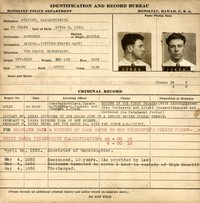
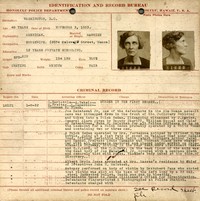
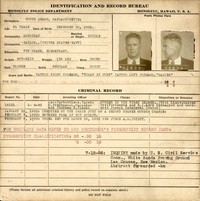
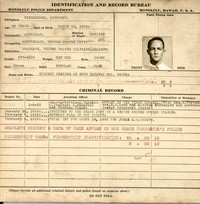



Wilbur is photographed during his inspection of Boulder Canyon. RC Identifier: 293728. Records of the Bureau of Reclamation, 1889 - 1992, NARA's Rocky Mountain Region, National Archives and Records Administration.
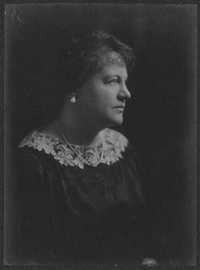
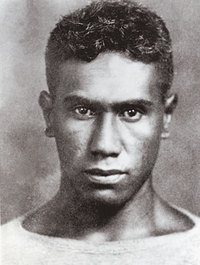
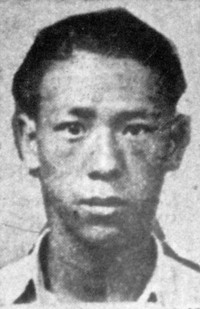
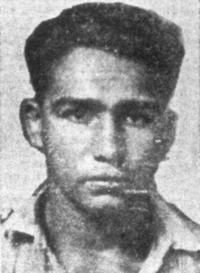
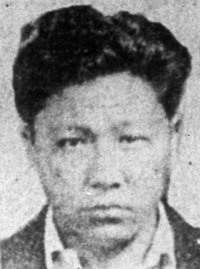
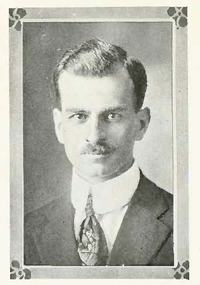
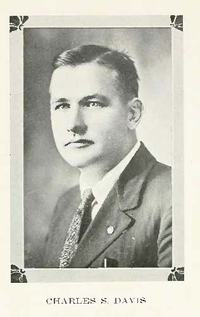
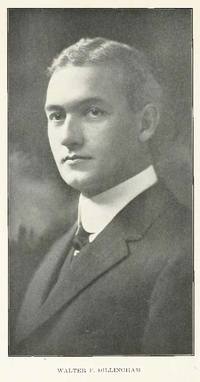
“Unless one has lived in this community one cannot appreciate the importance of the example to the people that they have no right to take the law into their own hands. While this may be condoned under conditions which prevail where whites are in the majority, it would be a hazardous thing to given any such recognition of lynch law in our community where it is vital to stress the necessity of abiding by the laws of the country.”
Early photo of Walter Dillingham from a book published in 1917.
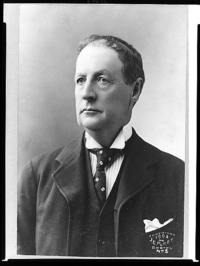
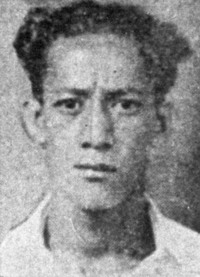
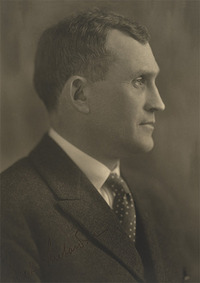
Richardson and those working under him conducted a massive investigation that resulted in 3,380 pages that filled fifteen volumes but were not published. The investigators interviewed over four hundred people in various positions, such as lawyers, judges, business leaders, politicians, law enforcement, and news editors. The report also included a separate 300 page summary of conclusions and recommendations. The entire work was conducted in two months. During the first day of the trial, which began with jury selection, the federal government released the Richardson Report.
Photo from the DOJ's Environment and Natural Resources Division: http://www.justice.
gov/enrd/Anniversary/
Seth_Richardson_bio.html
Photos


Photo #: 80-G-1034138, Official U.S. Navy Photograph, now in the collections of the National Archives.
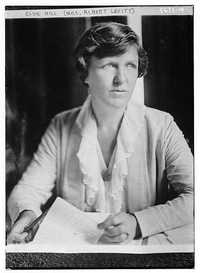
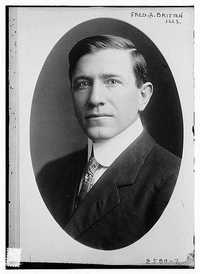
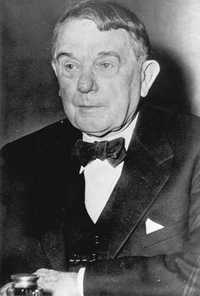
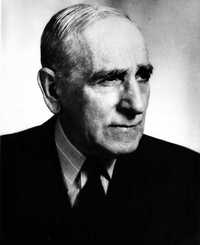
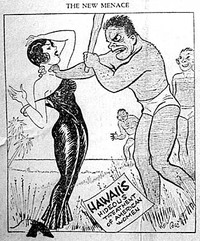
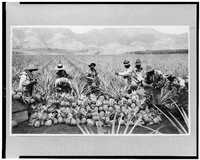
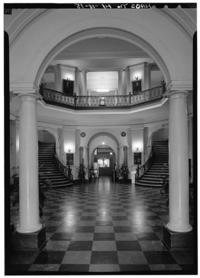

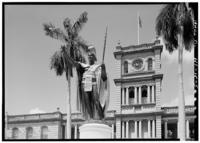
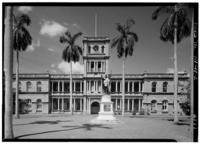
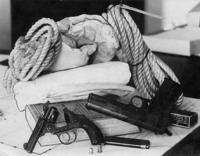
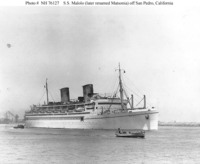
The SS Malolo was an American Cruise liner built by William Cramp & Sons, Philadelphia in 1926 for the Matson Line. It began service to Hawaii in 1927. The ship cost $8 million dollars to build, and at the time it was the most expensive and fastest merchant ship ever built in the U.S. It was 582 feet long and included seven decks, a swimming pool, ballroom, gymnasium, and space for 650 passengers in modern cabins. It had a 27 knot cruising speed and could make the crossing from San Francisco to Honolulu in four and a half days. It was renamed several times and known as Matsonia, Atlantic, and Queen Fredrica. U.S. Naval Historical Center Photograph.
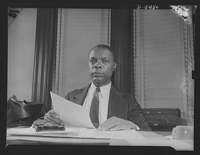
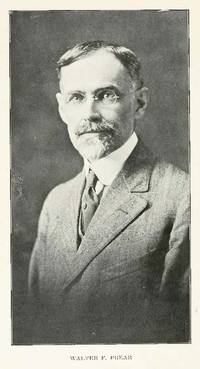
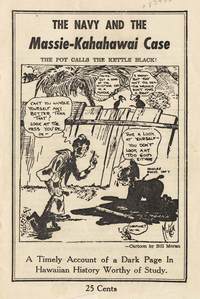
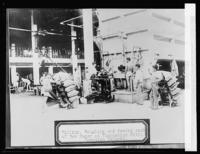
![Delivering Bagasse to fire-room. Raw sugar mill. Hawaiian Islands [between 1910 and 1920]](/riesenfeld_images/darrow/thumbs/Delivering_Bagasse_to_fire-room_Raw_sugar_mill_Hawaiian_Islands.jpg)
